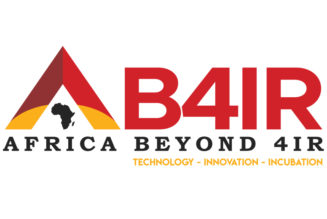While the mobile workforce has long been possible in theory, thanks to the ready availability of cloud technologies, many enterprises have continued to operate in a more traditional manner. The COVID-19 pandemic and subsequent lockdowns around the globe have forced businesses to completely rethink the way they operate.
This unprecedented situation has dramatically accelerated the mobility drive, and subsequently the adoption of the cloud. Most organisations were faced with the choice of enabling staff to work from home or ceasing to operate, and the cloud offers the ideal way to access technologies to facilitate this.
There is no going back
“While we may have moved down a level in our lockdown status, President Ramaphosa has stressed that those who are able to work remotely from home must be allowed to do so. Experts around the globe are also predicting that we may need to implement rolling lockdowns for the next two or three years. Business continuity now rests heavily on an organisation’s ability to successfully integrate cloud technologies that enable mobility,” says Andre Schwan, Deal Solutions Manager at T-Systems South Africa.
/* custom css */
.tdi_3_761.td-a-rec-img{ text-align: left; }.tdi_3_761.td-a-rec-img img{ margin: 0 auto 0 0; }
A successful implementation requires a sound strategy. However, an effective mobile workforce requires more than the deployment of cloud solutions, an advanced network or the rollout of laptops and collaboration tools. There are a number of other so-called ‘soft’ elements that have to be taken into account to minimise resistance and maximise productivity.
Change your mindset, change the world
South Africa’s sudden and complete lockdown took many businesses by surprise, and technology was pushed on employees in a hasty effort to enable businesses to continue operations. It is important to mitigate this impact by offering the relevant training and sessions to help employees feel comfortable in and trust technology.
With much of remote work there is also a lack of visibility into visual cues, and employees need to learn how to communicate clearly in a non-verbal setting. It also requires high levels of self-discipline and motivation, that need to be encouraged by employers.
Cloud-based productivity tools can be implemented to help management to understand how and when people are working. However, this is only the tip of the iceberg. Company culture is often a barrier to success, and it needs to be addressed.
“Together with technical change you have to plan the human change. When your workforce is not physically present in an office for set hours a day, there are many things that become very different. It is no longer possible to clock watch, especially in the current circumstances where many employees are juggling working from home with schooling their children. Micro-managing employees is also not productive. We need to move more toward an outcomes-based model that rewards employees for successfully completing tasks, not just being online for hours every day,” explains Sonja Weber, Lead Delivery Solution Manager at T-Systems South Africa.
Time is not on our side
In our current situation, it is essential to use available technology in the cloud space to create an effective working environment in a cost-effective way. Business processes may need to change to accommodate social distancing, so businesses need to adapt and make use of digital, cloud-based solutions.
“Now is the time to identify where processes can be automated. While the shift to cloud-based mobility has had to be sudden, there are many benefits that businesses will be able to leverage long after the pandemic has passed,” says Grant Somerset, Specialised Sales Executive at T-Systems South Africa.
To successfully integrate a mobile workforce and ensure business continuity, it is critical to work with an experienced partner. Many businesses panicked when faced with the need to abruptly lock down their operations, but a flexible workforce and business model can be extremely beneficial. Culture needs to form part of strategy around driving this change, and sound governance around people, process and technology becomes more crucial than ever.
Given the current situation and the uncertainty surrounding the duration and extent of lockdown, there is no margin for error. Working with an experienced partner that understands both the technical view of the business as well as the softer elements such as training, change management and cultural shift, can help to avoid the pitfalls and maximise potential advantages.











